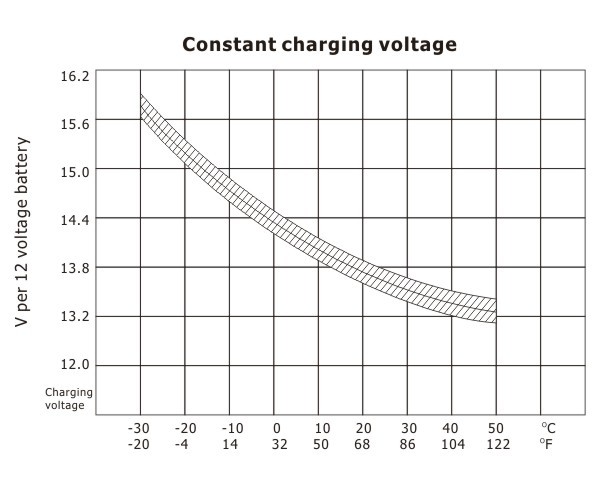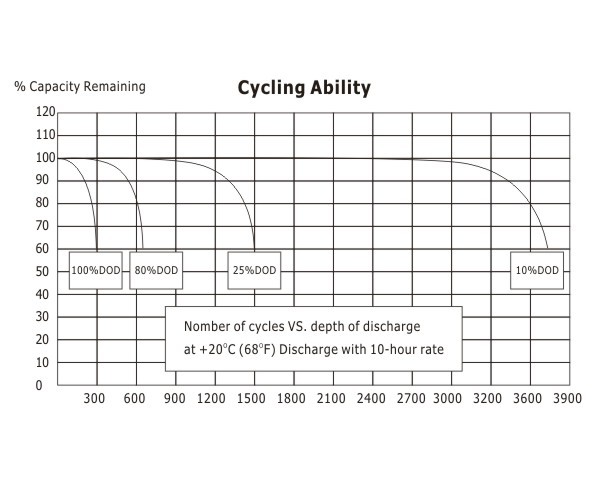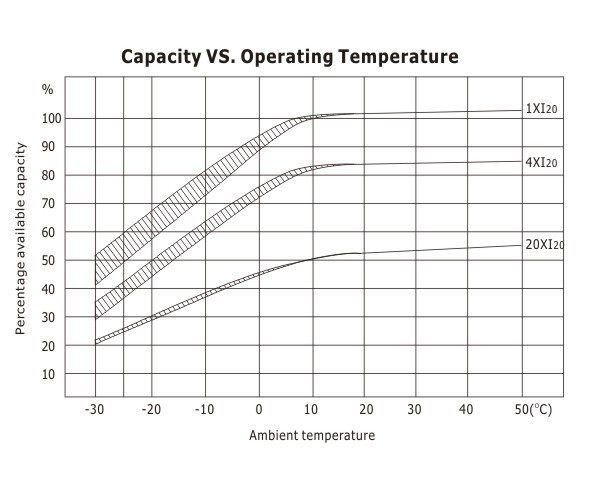Gel Battery Support
1. Charging
While the VELA Power gel battery will accept a charge extremely well due to its low internal resistance.
For using the sealed design, over-charging will dry out the electrolyte by driving the oxygen and hydrogen out of the battery, through the safety valves. Capacity is reduced and life is shortened If a battery is continually under-charged,
a power robbing layer of sulfate will buildup on the plates. Battery performance is reduce, life is reduced.
So what is important for gel battery that is: charge at least 2.30V/Cell volts but no more than 2.35V/Cell volts at
68 oF(20 oC). Constant current chargers should never be used on gel battery.

Constant charging voltage: Shown is the constant charging voltage in relation to the ambient temperature. The bandwidth shows a tolerance of ±30mV/Cell. This constant voltage is suitable for continuing charging and cyclic operation. In a parallel standby mode it always keeps battery in a fully charged state; in a cyclic mode, it provide for a rapidly recharging and highly cyclic performance.
2. Discharge & cycling ability
Battery discharge capacity and cycle life are depended on the depth of discharge (DOD), and the ambient temperature.
VELA Power gel battery is designed to the “acid limited.” This means that the power in the acid is used before the power in the plates. This design prevents the plates from ultra-deep discharges. Ultra-deep discharging is what causes life-shorting plates shedding and accelerates positive grid corrosion which destroy a battery.
Capacity vs. operating temperatures: shown are the changes in capacity for a wider ambient temperature range, giving the available capacity, as a percentage of the rated capacity, at different ambient temperatures, for 3 different load examples, with uninterrupted discharge to the appropriate discharge cut-off voltage.


The values for the upper edge of the curves were obtained from charging at an ambient temperature of +20℃ with a voltage limit to 2.30V/Cell. For the lower edge, charging was carried out at the specified ambient temperature. The curves show the behavior of battery after a number of cycles.
Please leave your message and tell us what is the product
you are interested in us:


Partner sites:jzyseo